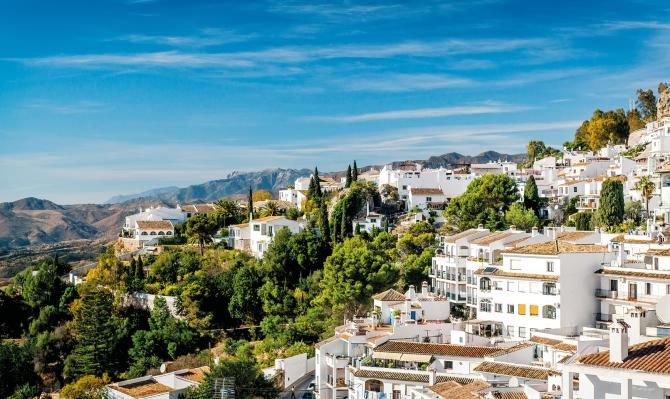
Buying a home in Spain and taking out a mortgage as a foreigner
Foreign demand for housing in Spain has performed exceptionally well after the pandemic. In 2022, foreigners bought 90,000 homes in Spain, 46% more than in 2021. In line with this good performance, the number of mortgages taken out by foreigners also increased and reached 30,000 in 2022, so that one in three foreign buyers took out a mortgage in Spain last year. Foreign residents tend to buy homes and take out mortgages for a similar amount as Spaniards. On the other hand, non-resident foreigners tend to opt for more expensive properties and, consequently, the average mortgage taken out by foreigners is higher, although there are notable differences depending on nationality and autonomous region. The value of mortgages taken out by foreigners in the Balearic Islands is particularly high while, in terms of nationality, Swedes and Americans tend to take out the largest mortgages.
Rise in home purchases by foreigners in Spain and, with it, the mortgages taken out
Home purchases by foreigners in Spain have recovered remarkably well after the pandemic, breaking all records in 2022. According to the College of Registrars, foreigners were involved in about 90,000 purchases in 2022 (45.6% more than in 2021) and accounted for 13.8% of the total.9 In line with these good figures, the number of mortgages for housing taken out by foreigners in Spain also rose to over 30,500, 33% more than in 2021. Despite this sharp increase, their relative weight in all mortgages was 6.6%, a figure similar to previous years (6.2% in the 2017-2021 average) and still well below the percentage represented by foreigners in Spain’s real estate market (13.8%). These data highlight the growth potential of the mortgage market for this segment of buyers.
In order to examine the use of financing by foreigners when buying a home, we calculated the ratio of the number of mortgages out of the number of foreign purchases. In 2022, 34% of foreign buyers took out a mortgage in Spain, compared to around 78% of Spanish buyers. This lower propensity of foreigners to take out a mortgage in Spain is mainly because they either obtain financing in their country of origin or do not need external financing (i.e. they buy with their own funds).10 However, as we will see in this article, there are marked differences by nationality and region, reflecting different financing needs depending on whether buyers choose Spain for work or vacation purposes.
- 9In this article, we primarily use data from the College of Registrars. According to MITMA real estate transaction data (based on the Notary Public’s Office), foreign purchases in 2022 totalled 134,592, 19.5% of the total. On the other hand, according to the Statistics Centre of the Notary Public’s Office, transactions carried out by foreigners amounted to 143,629 in 2022 and represented 21.1% of the total sales of free housing.
- 10Unfortunately, no official statistics are available to analyse this issue in greater depth.
Approximately one third of foreigners who buy a home in Spain also take out a mortgage in our country
Foreigners tend to buy more expensive properties than Spaniards and take out larger mortgages on average
In order to examine the typology of foreign buyers in more detail, we have used the statistics provided by the General Council of Notaries, since these enable us to differentiate between purchases made by resident and non-resident foreigners. In 2022, resident purchases accounted for 55% of all purchases by foreigners, while non-resident purchases accounted for the remaining 45%. The first chart below shows that the evolution over time of the average price per square metre of properties purchased by foreign residents is very similar to that of Spanish buyers. In contrast, non-resident foreigners tend to buy significantly more expensive homes whose price, moreover, has increased relatively more since 2020. On the other hand, if we look only at the price differences by nationality, we can see that the price paid by foreign buyers is clearly above the average price of housing purchased by Spaniards. As we have seen, this difference is entirely due to the higher price paid by non-resident foreigners. Next, we will analyse the data on mortgages taken out by foreigners, for which unfortunately there is no distinction between residents and non-residents.
In 2021 and 2022, the gap between Spaniards and foreigners in terms of the price paid for homes purchased
and the average mortgage taken out has widened
In line with this trend in the price of purchases, the following chart shows that the average value of mortgages taken out by foreigners is greater than those taken out by Spaniards, and that this situation intensified in 2021-2022: in 2022, the average mortgage taken out by foreigners was for 171,000 euros, 19% higher than the average mortgage for Spaniards (143,330 euros). In view of the trend in the average price per square metre purchased, based on notary figures, it can be inferred that the higher average value for mortgages taken out by foreigners is due to the non-residents, since resident foreigners present a very similar trend to that of Spaniards.
Which nationalities take out mortgages in Spain?
By nationality, the differences are very noticeable. The table below shows the low correspondence between the ranking of nationalities according to their number of purchases and the ranking corresponding to the number of mortgages taken out. If we look at the ratio of the number of mortgages in relation to the number of purchases, we find Chinese and Romanian citizens in first place, with a very high ratio, similar to that of Spaniards. They are followed by Bulgarians, Italians and Moroccans, with ratios of around 40-55%. These nationalities are usually foreigners who reside permanently in Spain and work here. It can be seen that the average mortgage is relatively small, smaller than mortgages taken out by Spaniards, with the exception of Italians, among whom there likely to be a combination of residents and non-residents who buy a home in Spain, both for permanent residence and for tourism purposes.
The British are the foreigners who buy the most homes in Spain but Romanians are the ones who take out the most mortgages, while Swedes and Americans take out the largest mortgages on average
On the other hand, at the bottom of the table we find the Belgians, Germans, Swedes, British and French. These five nationalities are all significant buyers of housing in Spain. Together they account for 37% of all house purchases by foreigner but only 17% of the mortgages; i.e. only 16% of the purchases made by these nationalities have a mortgage associated with them. When a mortgage is taken out, however, its average value is very high, particularly in the case of the Swedes, with the largest average mortgage of all (337,413 euros). These nationalities correspond to countries with high levels of per capita income and, on average, they acquire more expensive and larger properties, resulting in larger mortgages on average.

Notable regional differences in the purchase of housing by foreigners
It is no secret that the geographic distribution of house purchases by foreigners is very uneven among Spain’s different regions. Tourist areas (the islands and the Mediterranean coast) and cities account for the largest share. Likewise, most mortgages taken out by foreigners are also granted in these regions, although we can find important differences in the ratio of the number of foreign mortgages to purchases, as can be seen in the table. Some regions, such as Madrid and the Basque Country, have very high ratios (over 80%) while, at the other extreme, we find very tourist-oriented communities such as the Canary Islands and the Community of Valencia, where the number of mortgages taken out by foreigners is much lower than the number of purchases (ratio below 20%).
Special mention should be made of the Balearic Islands, which alone account for one out of every three foreign purchases in Spain, although «only» 17% of the mortgages. The very large average mortgage taken out by foreigners (367,000 euros) is of note, reflecting both the high price of housing in the region and the importance of the luxury segment. Moreover, this amount grew by 44% between 2019 and 2022, a much larger increase than the 27% recorded in Spain as a whole and the 20.1% increase in house prices (INE) in the region.
The median value of mortgages for housing purchased by foreigners has risen considerably since 2019, much more than the price of housing in the vast majority of the regions
In terms of the size of the average mortgage, after the Balearic Islands (367,000 euros) we find the Community of Madrid (229,000 euros), Andalusia (197,000 euros) and Catalonia (178,000 euros). These regions also account for most of the «golden visas» granted to non-EU citizens for the purchase of a home worth 500,000 euros or more.11 However, their small number makes it unlikely that they will play a significant role in the evolution of house prices in Spain as a whole, although they may exert some upward pressure on a few local markets. On the other hand, there are seven autonomous regions where the average mortgage does not reach 100,000 euros. These are regions that are not so popular with tourists, where the nationalities of the buyers are generally linked to residence for reasons of work, and they tend to correspond to buyers with lower per capita income who therefore buy less expensive homes and take out smaller mortgages on average.
- 11According to information provided by the Spanish government, 476 visas were granted in 2022 to foreigners who acquired a property worth €500,000 or more, visas that were introduced by Law 14/2013 to support entrepreneurs and their internationalisation. Between 2013 and 2022, 4,940 such visas were granted (including those granted for capital investments and business projects).

How will house prices in tourist areas evolve? An analysis using internal CaixaBank data
As we noted at the beginning of this article, house purchases by foreigners in Spain have been highly resilient to the rise in interest rates. In fact, the data for Q1 2023 continue to show a significant increase (8.1% year-on-year) compared to the decline in purchases by Spaniards (–3.5% year-on-year).
The resilience of foreign purchases to rising interest rates will support the trends in house prices in tourist destinations
One key factor explaining this resilience is that foreign buyers are less dependent on external financing. In fact, many of them (especially non-residents) tend to finance such purchases with their own funds, as an investment.12 In this respect, in tourist areas dominated by non-resident foreigners, who tend to buy more expensive properties, demand is expected to be stronger and, consequently, house prices are expected to be more resilient in spite of the current context of a generalised slowdown due to interest rate hikes.
The following chart shows the trend in house prices in municipalities classified as tourist and non-tourist based on the percentage of CaixaBank POS spending using foreign cards.13 It can be seen that the average house price in tourist municipalities is higher than in non-tourist municipalities, a gap that has been widening, reaching the current figure of 75%. Indeed, the most recent data, corresponding to Q1 2023, show that the rate of growth in house prices is higher in tourist municipalities (5.7% year-on-year) than in the rest (4.9%). Looking ahead to the coming quarters, forecasts regarding the trend in house prices at a municipal level14 point to the growth rate moderating in both tourist and non-tourist municipalities, largely as a result of higher interest rates. However, this moderation is expected to be less in tourist municipalities, which will continue to enjoy strong growth (4.6% year-on-year in Q1 2024), enabling them to reach an average house price similar to the previous peak recorded in mid-2008. On the other hand, in non-tourist municipalities the slowdown will be more pronounced: from year-on-year growth of 4.9% in Q1 2023, a much more subdued 1.8% growth is expected in Q1 2024. The average house price in these municipalities will therefore still be 26% below the peak reached in 2008.
- 12It is also possible that a proportion of these buyers who do not take out a mortgage in Spain do so in their country of origin, but no such data are available.
- 13We have classified municipalities as tourist and non-tourist according to whether spending using foreign cards via CaixaBank POS terminals was higher (or lower) than 10% of the total in 2019.
- 14Obtained from the machine learning models of CaixaBank’s real estate big data tool.




